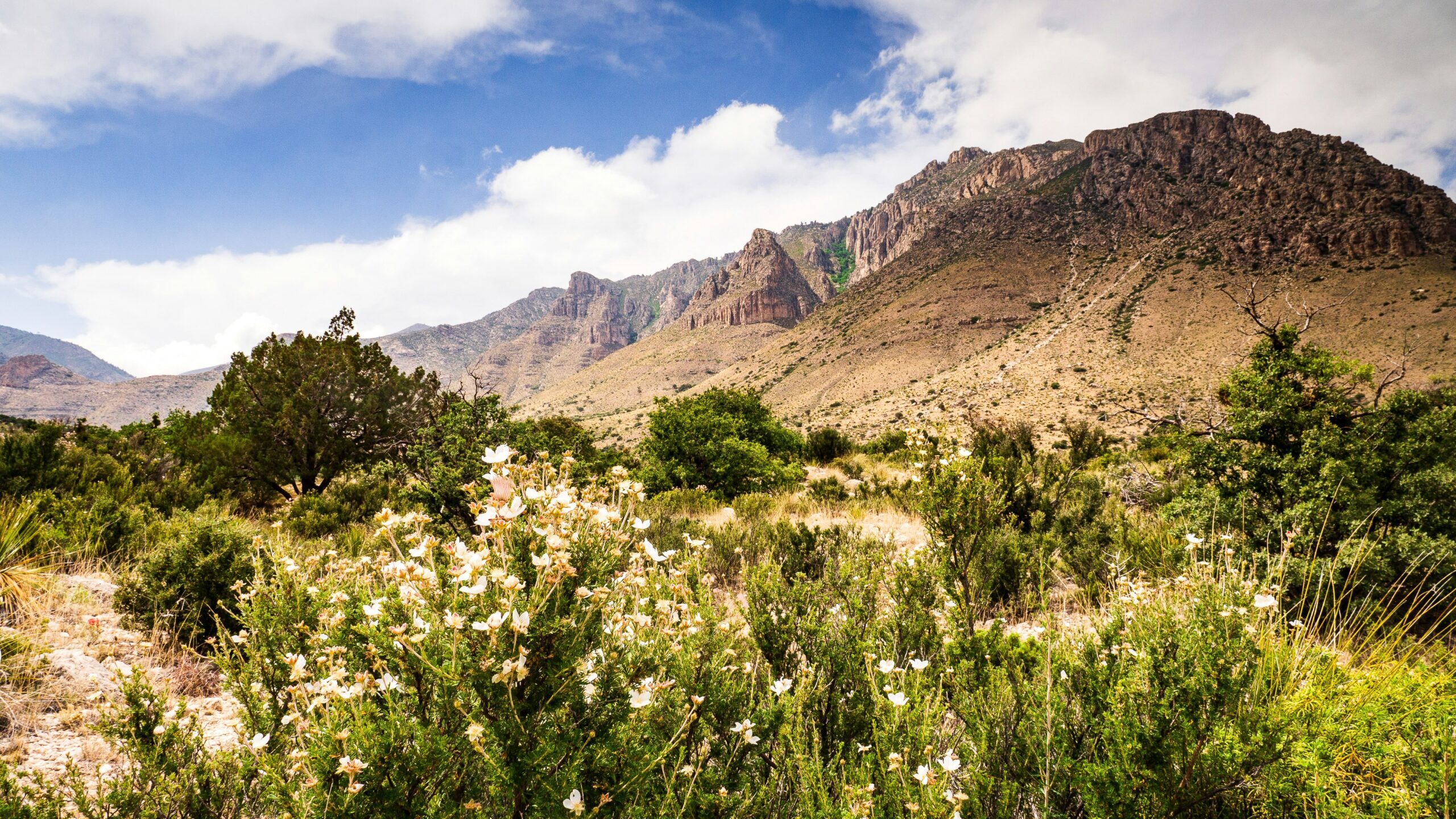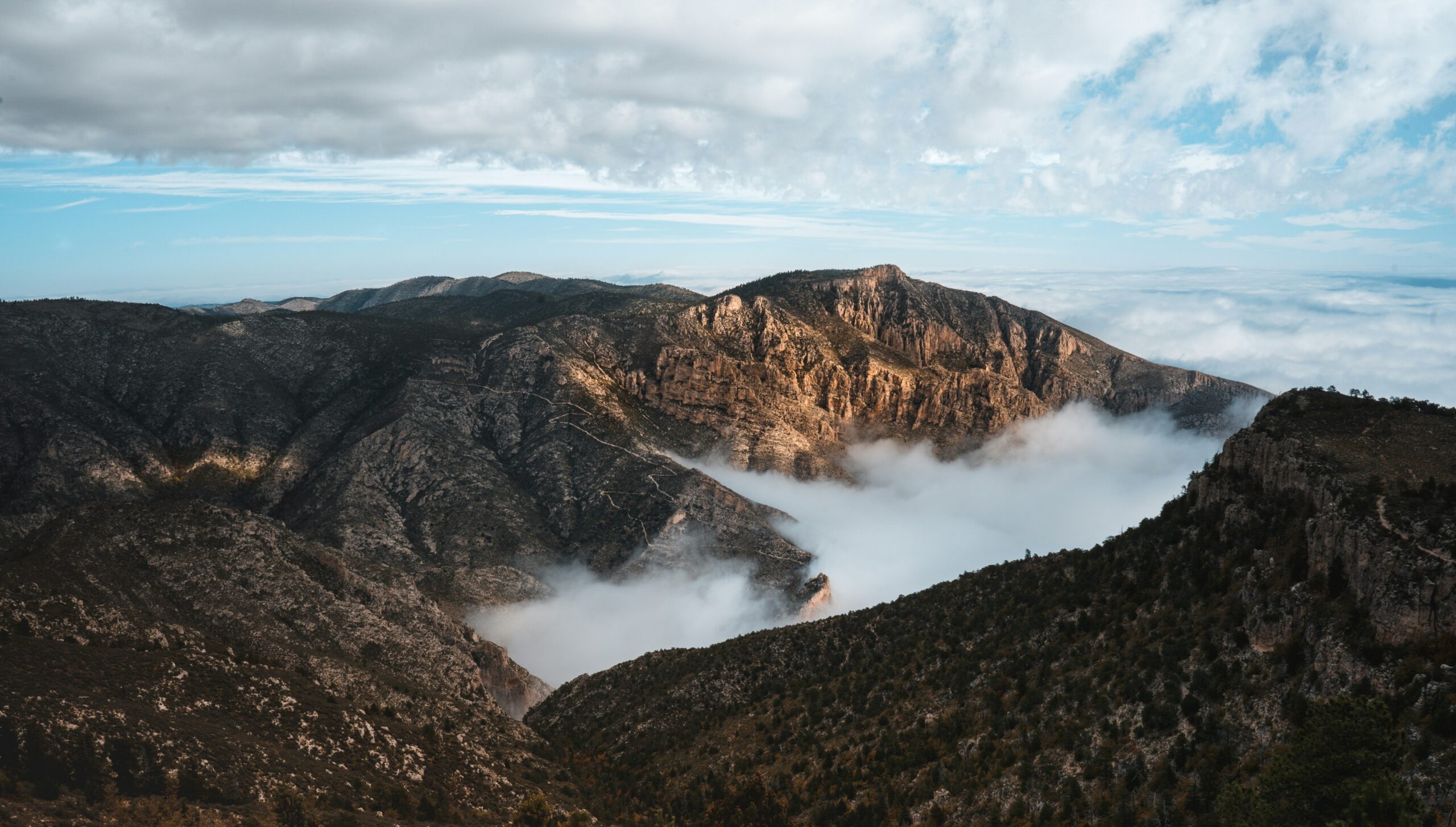–
Guadalupe Mountains National Park
Discover Guadalupe Mountains National Park: Your Ultimate Guide to the High Peaks & Hidden Gems
Nestled within the rugged terrain of West Texas, Guadalupe Mountains National Park stands as a testament to the untamed beauty of the American Southwest. With its high peaks, dramatic canyons, and diverse ecosystems, this park offers adventurers a playground of exploration and discovery.
Spanning over 86,000 acres, Guadalupe Mountains National Park boasts the highest peak in Texas, Guadalupe Peak, reaching a towering 8,749 feet above sea level. Beyond its lofty heights, the park is home to a spectrum of geological wonders, including ancient fossilized reefs and intricate limestone formations. Visitors can traverse through rugged trails, from the challenging ascent to Guadalupe Peak to the serene paths winding through McKittrick Canyon, renowned for its vibrant fall foliage.
Whether you’re an avid hiker seeking panoramic vistas or a nature enthusiast craving solitude amidst pristine wilderness, Guadalupe Mountains National Park promises an unforgettable adventure.
Top 3 Facts About Guadalupe Mountains National Park
01
Ancient Marine Fossils
Guadalupe Mountains National Park harbors one of the world’s most extensive Permian fossil reefs, dating back over 260 million years. These fossilized remnants offer insights into the ancient marine life that once thrived in the region, including sponges, algae, and other prehistoric creatures.
02
Highest Peak in Texas
Guadalupe Peak, towering at 8,749 feet above sea level, claims the title of the highest point in Texas. This iconic summit offers panoramic views stretching across the Chihuahuan Desert and serves as a challenging yet rewarding destination for hikers tackling the Guadalupe Peak Trail.
03
Sky Island Biodiversity
The park’s diverse ecosystems span from desert scrublands to high-elevation forests, creating what scientists refer to as a “sky island.” This unique biodiversity hotspot is home to over 1,000 plant species, including several endemic to the area, such as the Guadalupe fescue and the Guadalupe Mountain thistle.
Camping and transportation in Guadalupe Mountains National Park
How to Get to Guadalupe Mountains National Park
Getting to Guadalupe Mountains National Park typically involves a bit of planning, especially considering its remote location in West Texas. Here are several ways to reach the park:
- By Car: Most visitors to Guadalupe Mountains National Park arrive by car. The park is accessible via US Highway 62/180, which runs through the northern portion of the park. From El Paso, Texas, travelers can take US 62/180 east for approximately 110 miles to reach the park’s entrance.
- By Air: The closest major airport to Guadalupe Mountains National Park is El Paso International Airport (ELP), located about 110 miles west of the park. From the airport, visitors can rent a car and drive east on US 62/180 to reach the park.
- By RV or Camper: Travelers with RVs or campers can access the park via US Highway 62/180. The park offers RV camping facilities at the Pine Springs Campground, which includes sites with electrical hookups and amenities such as restrooms and potable water.
Places to Stay Near Guadalupe Mountains National Park
While Guadalupe Mountains National Park offers camping facilities within its boundaries, there are also options for lodging and camping near the park. Here are some places to consider:
- Pine Springs Campground (Within the Park): The Pine Springs Campground is located within Guadalupe Mountains National Park and offers tent and RV camping sites. Amenities include restrooms, potable water, picnic tables, and fire grills. Reservations are recommended, especially during peak seasons.
- Guadalupe Peak RV Park (Salt Flat, Texas): This RV park is located approximately 20 miles from Guadalupe Mountains National Park, offering full-hookup RV sites with amenities such as laundry facilities, showers, and a convenience store.
- Carlsbad, New Mexico: Carlsbad is a city located about an hour’s drive from Guadalupe Mountains National Park. It offers a range of lodging options, including hotels, motels, and bed-and-breakfasts. Visitors can find accommodations to suit various budgets and preferences.
- Van Horn, Texas: Van Horn is another nearby town located about an hour and a half drive from the park. It offers lodging options such as hotels, motels, and RV parks, providing convenient access to the park for travelers passing through the area.
- Bureau of Land Management (BLM) Camping: There are dispersed camping opportunities on Bureau of Land Management (BLM) lands near Guadalupe Mountains National Park. Visitors can find primitive camping spots with minimal amenities, offering a more secluded and rustic experience.
Driving
The park has a well-maintained road system that allows visitors to access various points of interest, trailheads, and scenic overlooks.
Public
Guadalupe Mountains National Park is a relatively remote and rugged area, and as such, there is no public transportation system within the park itself.
Parking
The park provides designated parking areas at various trailheads, scenic overlooks, visitor centers, and other points of interest to accommodate visitors’ vehicles.
Best Time to Go to Guadalupe Mountains National Park
Summer
Summer brings warmer temperatures to Guadalupe Mountains National Park, making it a popular time for outdoor activities such as hiking, camping, and stargazing. However, visitors should be prepared for hot weather, especially in the lower elevations of the park. Higher elevations offer relief from the heat, with cooler temperatures and refreshing breezes.
Summer also brings the monsoon season to the region, which can bring sudden thunderstorms and flash floods. Despite the risks of inclement weather, summer offers longer daylight hours, allowing visitors ample time to explore the park’s diverse landscapes and enjoy its natural beauty.
Winter
Winter in Guadalupe Mountains National Park brings cooler temperatures and occasional snowfall, especially at higher elevations. While winter may not be the most popular time to visit the park, it offers a unique experience for visitors seeking solitude and tranquility amidst the serene winter landscapes. Hiking and camping are still possible during this season, although visitors should be prepared for cold temperatures and potential weather-related closures of certain trails or facilities.
Winter also offers excellent opportunities for wildlife viewing, as animals may be more active during the cooler months. Additionally, winter is an ideal time for stargazing, with crisp, clear nights providing optimal conditions for observing the night sky.
Spring
Spring is a delightful time to visit Guadalupe Mountains National Park as the temperatures begin to warm up, and the landscape comes alive with vibrant colors. Wildflowers, including bluebonnets, Indian paintbrush, and yucca, blanket the desert floor and mountain slopes, creating a picturesque scene for hikers and photographers alike.
The weather is generally mild during this season, making it ideal for exploring the park’s extensive network of trails. Spring also marks the peak of the birdwatching season, with migratory birds passing through the area, adding to the park’s biodiversity.
Fall
Fall is considered one of the best times to visit Guadalupe Mountains National Park, thanks to its cooler temperatures and stunning displays of fall foliage. McKittrick Canyon, in particular, is renowned for its vibrant autumn colors, attracting visitors from near and far to witness the spectacle. Hiking in the park during fall offers the opportunity to enjoy comfortable temperatures and breathtaking scenery, with fewer crowds compared to the peak summer season.
Fall also marks the beginning of the stargazing season, with clear night skies providing excellent opportunities for observing the Milky Way and other celestial wonders.
Must-See Attractions
Helpful Tips: Making the Most of Your Adventure to Guadalupe Mountains National Park
Plan Ahead
Guadalupe Mountains National Park is remote, so it’s essential to plan your trip in advance. Check the park’s website for information on current conditions, trail closures, and any alerts or advisories. Consider making campground reservations, especially during peak seasons, to ensure availability.
Pack Proper Gear
Wear sturdy hiking shoes or boots with good traction, as many trails in the park are rocky and uneven. Dress in layers to accommodate fluctuating temperatures, especially if hiking to higher elevations. Don’t forget essentials like sunscreen, a hat, sunglasses, and insect repellent.
Be Mindful of Altitude
Guadalupe Mountains National Park is home to high elevations, with trails reaching over 8,000 feet above sea level. If you’re not acclimated to high altitudes, take it slow and allow yourself time to adjust. Watch for signs of altitude sickness, such as headaches, dizziness, or nausea, and descend to lower elevations if symptoms persist.
Check Weather Conditions
Weather in the desert can be unpredictable, with temperature extremes and sudden storms. Check the weather forecast before your visit and be prepared for changing conditions. Bring rain gear and dress appropriately for cooler temperatures, especially if camping overnight.


Frequently Asked Questions about Guadalupe Mountains National Park
Some of the best hiking trails in the park include the Guadalupe Peak Trail, McKittrick Canyon Trail, Devil’s Hall Trail, and Smith Spring Trail. Each offers unique landscapes and experiences, from sweeping vistas to lush canyon environments.
The fall and spring seasons are typically the best times to visit the park, offering milder temperatures, vibrant foliage, and abundant wildlife. However, visitors should be prepared for hot temperatures in the summer and potential snowfall in the winter.
Yes, the park offers camping facilities at the Pine Springs Campground, which provides tent and RV sites with amenities such as restrooms, potable water, and picnic tables. Additionally, backcountry camping is permitted in designated areas with a permit.
Wildlife in the park includes mule deer, elk, coyotes, mountain lions, and a variety of bird species. Visitors may also encounter reptiles such as rattlesnakes and lizards, as well as smaller mammals like jackrabbits and foxes.
Yes, Guadalupe Peak is a popular hiking destination in the park, and visitors are allowed to climb it. The Guadalupe Peak Trail is a challenging but rewarding hike that leads to the summit, offering panoramic views of the surrounding landscape.
Yes, potable water is available at designated locations within the park, including campgrounds, visitor centers, and certain trailheads. It’s essential to bring an ample supply of water with you, especially when hiking or camping in remote areas.